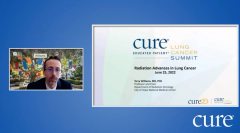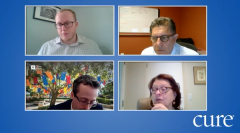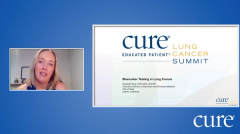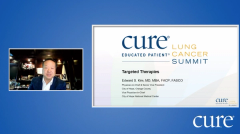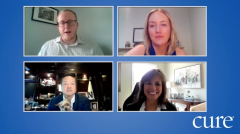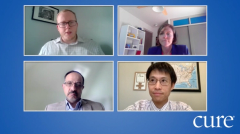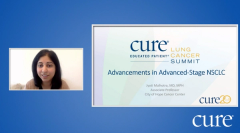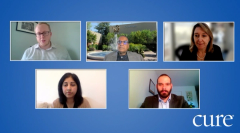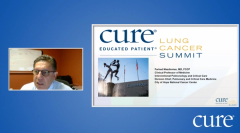
Educated Patient® Lung Cancer Summit Targeted Therapies Presentation: June 25, 2022
Watch Dr. Edward S. Kim, from City of Hope, discuss targeted therapy during the CURE Educated Patient Lung Cancer Summit.
Although the development of targeted therapies has changed the treatment landscape in lung cancer, more needs to be done to ensure that every patient can benefit from these advances, according to an expert.
During CURE®’s Educated Patient® Lung Cancer Summit, Dr. Edward S. Kim, physician-in-chief and senior vice president at City of Hope Orange County in California, highlighted the major milestones of targeted therapies in lung cancer. However, he also detailed the lack of accessibility to clinical trials, which if addressed, he said, would benefit more patients.
“Not a Good Situation”
Kim explained that in 2005, patients with lung cancer were limited to only chemotherapy as an option and even that was not guaranteed to improve outcomes.
According to Kim, only 80% of patients with lung cancer were eligible for chemotherapy. Of those eligible patients, only 15% to 20% of the patients had a positive response to the chemotherapy.
Moreover, he said, the median overall survival rate (time from diagnosis or start of treatment to death from any cause) for patients after treatment was eight or nine months.
Kim also noted that there
“It was just not a good situation,” he said.
A Renaissance in the Field
Over the past 10 years, Kim explained, researchers were not only able to find new biomarkers but also implement public health measures such as early detection and increased screening.
Using a personal experience from one of his patients, Kim illustrated to the audience how targeted therapies have transformed the field of lung cancer. Testing identified that the patient had an epidermal growth factor (EGFR) exon 19 deletion mutation. The doctors were then able to give the appropriate treatment and the tumor “disappeared,” according to Kim.
“(We) had not really experienced anything like this in our field until this era,” he explained.
Clinical Trials Drive Breakthroughs
None of these breakthroughs in precision medicine would have been possible without clinical trials, according to Kim.
However, he said, 19 in 20 patients are not eligible for clinical trials. This information represents a “sobering reality” that he said must be addressed.
And although geographical limitations are one driving factor behind a lack of accessibility (most clinical trials are conducted at large research centers that many patients with cancer do not live near) to clinical trials, he cited the extensive criterium that patients must meet to be enrolled on trials.
He said he has made it a priority to expand accessibility to more patients. Through publishing papers, joining forces with patient advocacy groups and recruiting volunteers at conferences like ASCO, Kim shared that they were able to convince the National Cancer Institute to change their protocols for clinical trials which was “a big step” in reshaping eligibility criteria.
Kim noted that he is optimistic about the future of precision medicine, noting that this is an “exciting time” in the field.
“Targeted therapies transform care, and we need to fix these clinical trials to make sure that the eligibility criteria are inclusive and reflect a patient population that is represented,” he concluded.
For more news on cancer updates, research and education, don’t forget to

